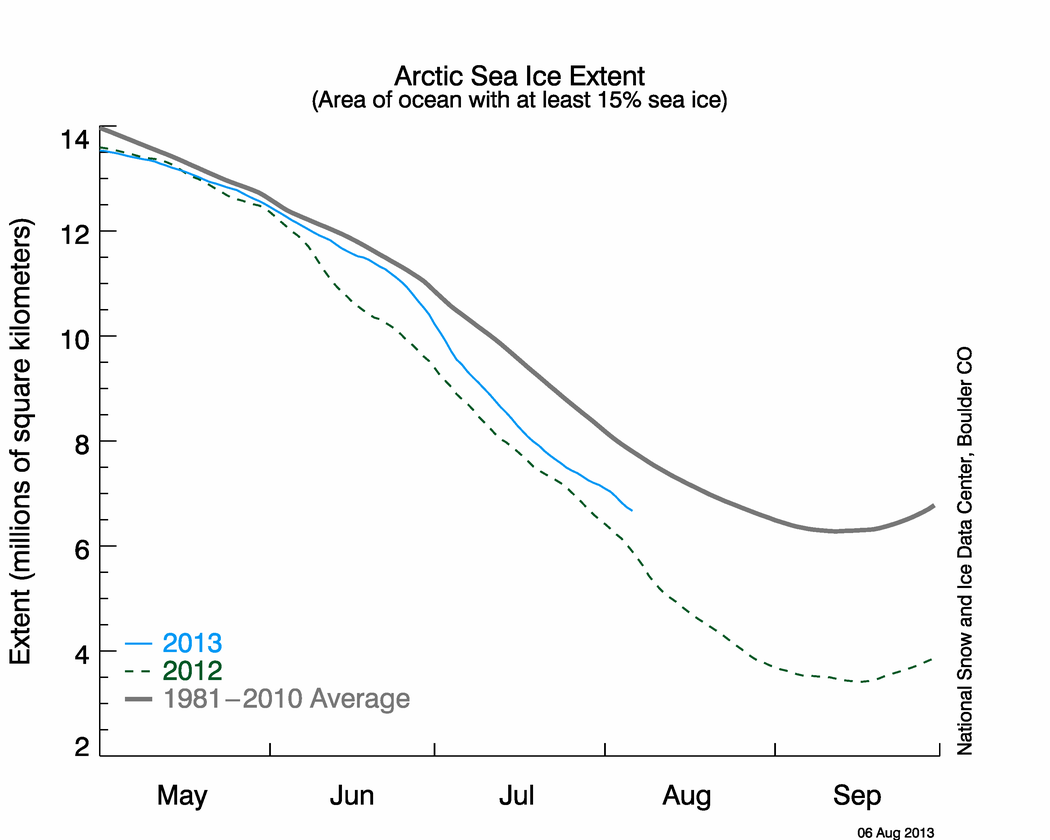The National Snow and Ice Data Center, as expected, said today that the cloak of sea ice drifting on the Arctic Ocean hit its minimum extent on Sept. 12, putting 2009 behind the last two years in the size of the retreat.
As you might imagine, self-professed climate skeptics (most climate scientists say they are, like any scientist, implicitly skeptical), have been crowing about how this year’s ice conditions are confounding both climate campaigners and climate scientists. At the same time, environmental groups are using the finding as more justification for urgent action to cut emissions of greenhouse gases.
In the meantime, the small global network of ice, climate and ocean specialists trying to make sense of ice behavior at both poles are — as always — working to use each year’s data to refine their still crude models. Many readily acknowledge that the Arctic is an extraordinarily complicated system in which ice conditions are determined by winds, currents and both air and sea temperature. It is a system that can amplify either a human warming influence or a natural one, making the task of disentangling a signal of human influence from other forces exceedingly tough.
The Arctic Ocean ice sheath, which I got to know several years ago while camped near the North Pole on floes that were drifting 400 yards an hour, has some of the qualities of the vanishing snows of Kilimanjaro when thrust into the climate debate.
It’s iconic, but complicated. Have a look at this time-lapse video taken by a Webcam near the North Pole and weigh in:
By Andrew C. Revkin


